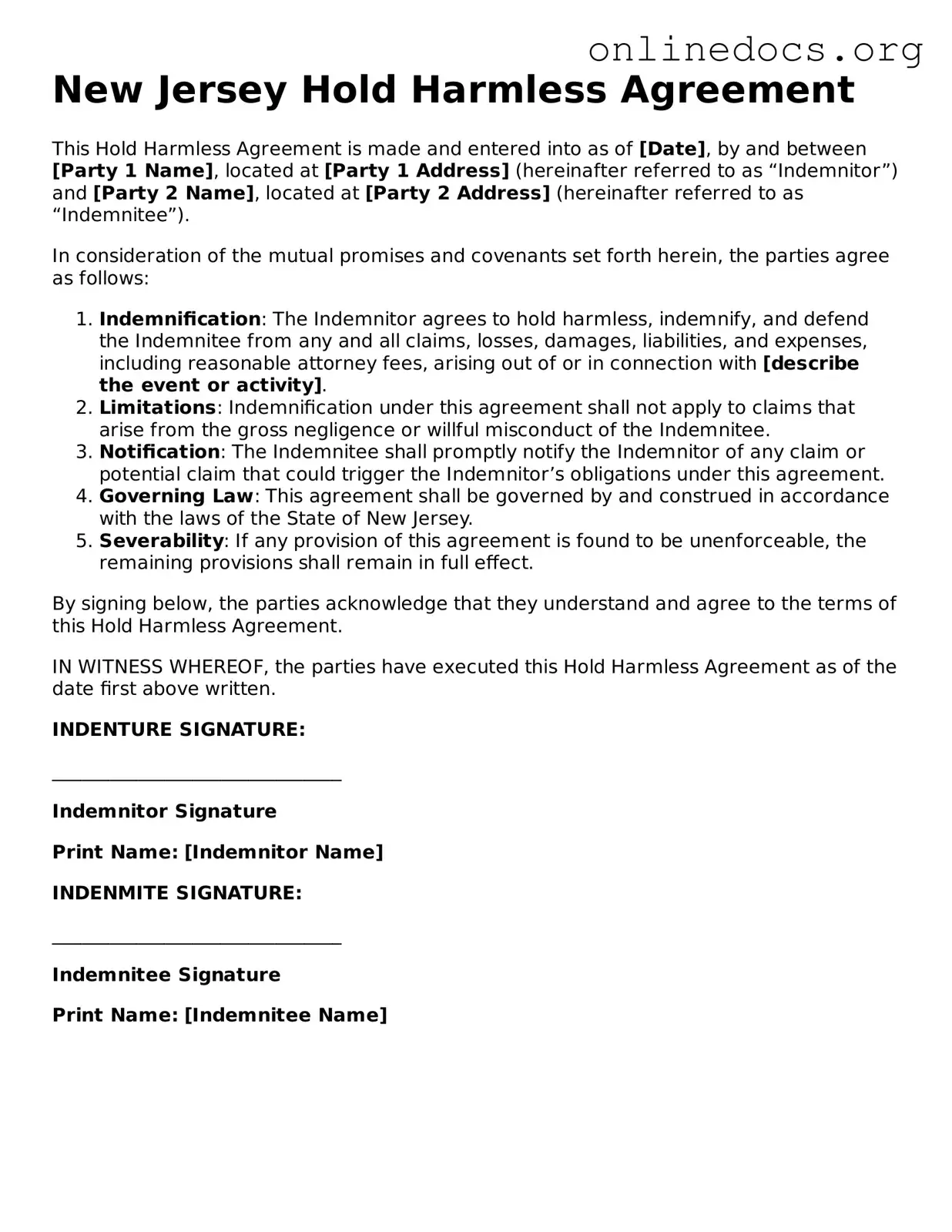The Indemnity Agreement is similar to the New Jersey Hold Harmless Agreement in that both documents aim to protect one party from liability. An Indemnity Agreement typically involves one party agreeing to compensate another for any losses or damages incurred. Like the Hold Harmless Agreement, it shifts the risk from one party to another, often used in business transactions and contracts to ensure that one party is safeguarded from financial consequences due to the actions of the other.
The Waiver of Liability is another document that shares similarities with the Hold Harmless Agreement. This waiver is often used in situations where participants acknowledge the risks involved in an activity and agree not to hold the organizer responsible for any injuries or damages. Both documents serve to limit liability and protect parties from lawsuits arising from unforeseen incidents.
The Release of Liability form also parallels the New Jersey Hold Harmless Agreement. This document releases one party from any legal claims or liabilities that may arise from a specific activity or event. Both forms are designed to protect individuals or organizations from being held accountable for injuries or damages, emphasizing the importance of consent and acknowledgment of risk.
The Liability Insurance Policy serves a similar purpose by providing financial protection against claims of negligence or harm. While the Hold Harmless Agreement is a contractual agreement between parties, a Liability Insurance Policy is a formal insurance contract that offers coverage for potential legal claims. Both documents are crucial in risk management and ensuring that parties are shielded from financial loss.
The Service Agreement often includes indemnity clauses that resemble the provisions found in a Hold Harmless Agreement. This document outlines the terms and conditions of a service relationship and may specify that one party will indemnify the other for any damages arising from the service provided. Both agreements aim to clarify responsibilities and protect against potential liabilities.
To effectively manage your LLC, it's crucial to utilize a well-structured document like the comprehensive Operating Agreement template, which lays out the essential guidelines and procedures for your business operations. For more information, visit the Operating Agreement guide.
The Construction Contract frequently contains Hold Harmless provisions. In construction projects, these clauses protect property owners and contractors from claims related to accidents or damages that occur during the project. Similar to the Hold Harmless Agreement, these provisions allocate risk and ensure that one party assumes responsibility for certain liabilities.
The Rental Agreement is another document that can include Hold Harmless language. In rental situations, landlords may require tenants to agree to hold them harmless for any injuries that occur on the property. This agreement helps to mitigate the risk for landlords while ensuring that tenants understand their responsibilities regarding safety and liability.
The Employment Agreement may also contain indemnity clauses similar to those found in the Hold Harmless Agreement. Employers often include provisions that protect them from lawsuits related to the actions of their employees. Both documents aim to clarify liability and protect parties from potential legal claims arising from their respective roles.
The Partnership Agreement can include Hold Harmless provisions to protect partners from liabilities incurred by the partnership. This agreement outlines the responsibilities and obligations of each partner and may specify that one partner will indemnify the others for certain actions. Both documents focus on risk management and ensuring that partners are shielded from financial repercussions.
The Memorandum of Understanding (MOU) may also resemble the Hold Harmless Agreement in its intent to outline responsibilities and liabilities between parties. While an MOU is often less formal, it can include clauses that protect one party from claims arising from the agreement. Both documents aim to clarify expectations and protect against potential disputes.
